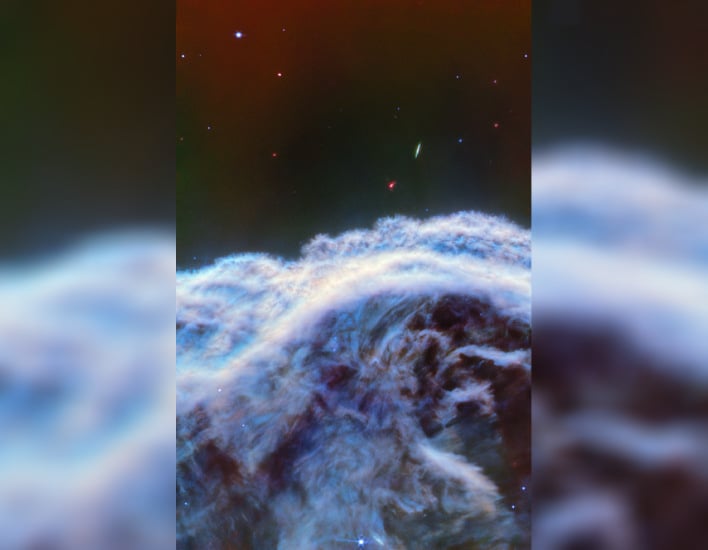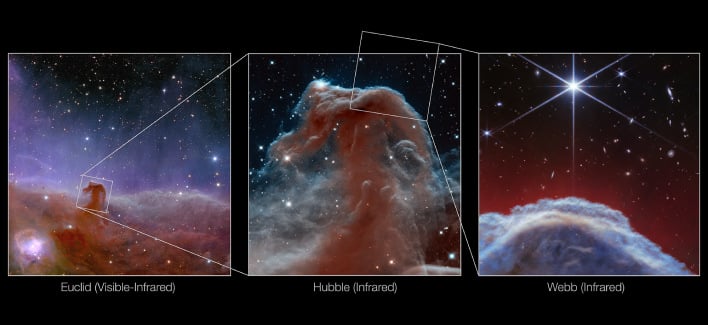NASA’s Webb Space Telescope Captures Horsehead Nebula In Stunning Detail

The iconic Horsehead Nebula is located in the constellation Orion, in a dense region known as the Orion B molecular cloud. According to NASA, it formed from a collapsing interstellar cloud of material, and its luminescence is because of a nearby hot star. Astronomers have estimated that the Horsehead has around five million years left before it disintegrates. Webb’s latest images focus on the illuminated edges of the top of the nebula’s dust and gas structure.

The image above zooms in on a portion of the horse’s mane, and was taken by Webb’s MIRI (Mid-infrared Instrument). The MIRI instrument captures the glow of substances such as dusty silicates and soot-like molecules. In the image, blue represents light at wavelengths of 5.6, 7.7, and 10 microns. Green is 11, 12, and 15 microns, while red is 18, 21, and 25 microns.
NASA remarked that Webb was able to capture for the first time the small-scale structures of the illuminated edge of the Horsehead. Webb also revealed a network of thin features being swept out away from the cloud. These new observations have allowed astronomers to look into how the dust blocks and emits light, as well as gain a better understanding of the multidimensional shape of the nebula.
Webb is not the first space telescope to capture images of the Horsehead Nebula. Euclid and Hubble have also captured the enigmatic nebula throughout their lifetimes. The Euclid image above was captured in November 2023, while Hubble’s was captured on the telescope’s 23rd anniversary in 2013.
As Webb continues to unveil new secrets of the Universe, astronomers will continue to study the spectroscopic data that has been obtained from the latest images of the Horsehead Nebula. They are hopeful it will provide further insights into the evolution of the physical and chemical properties of the material observed across the nebula.


